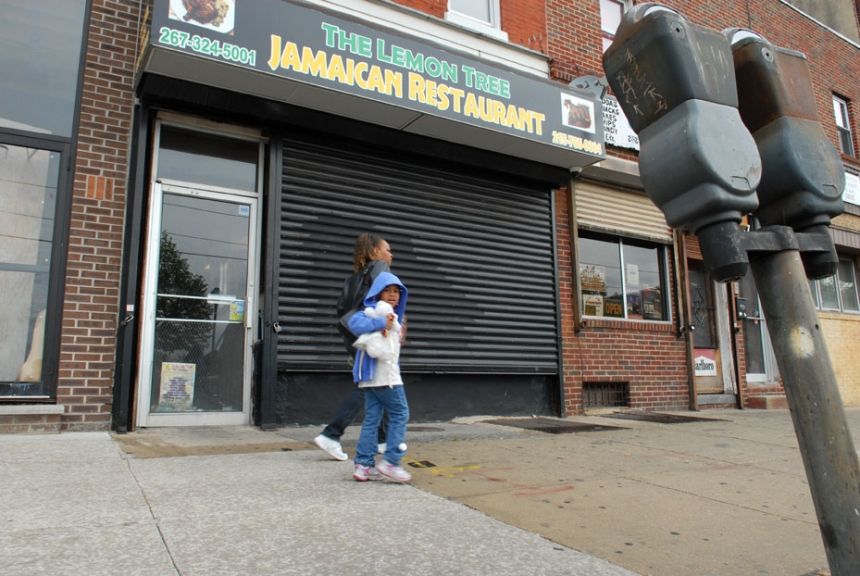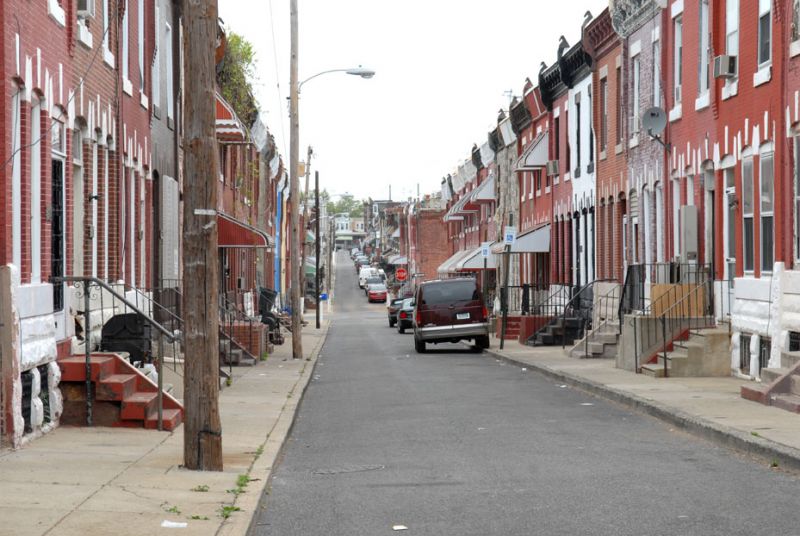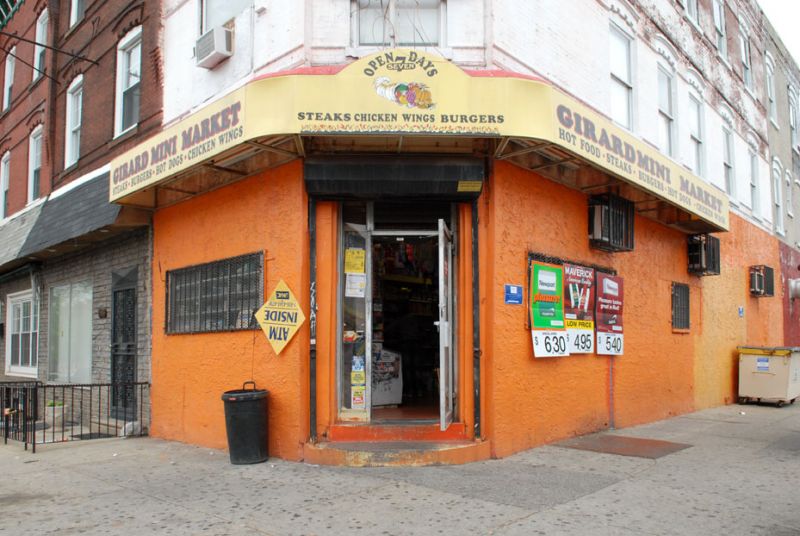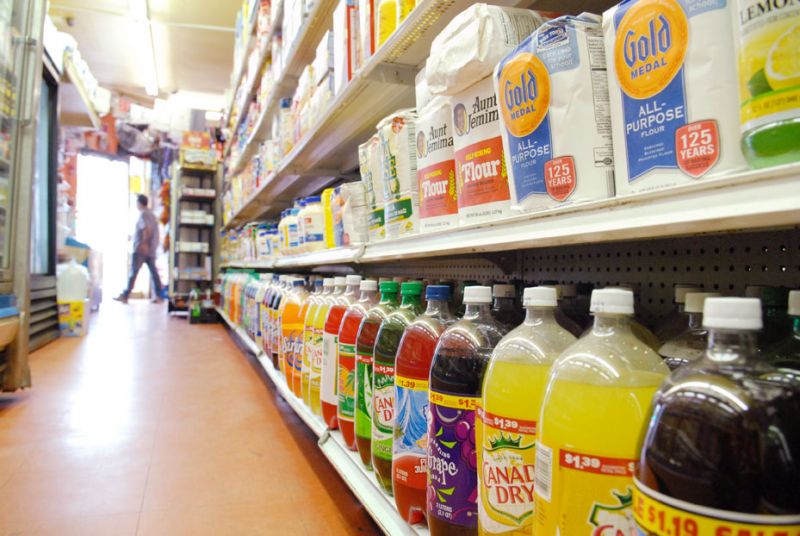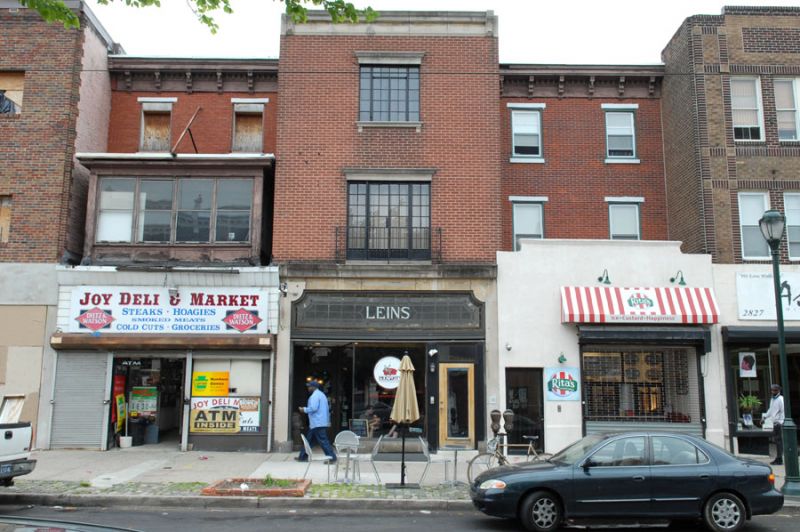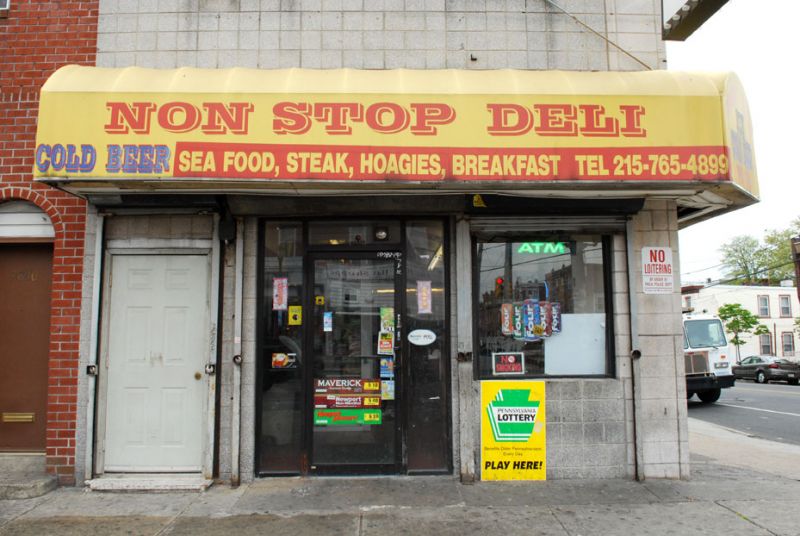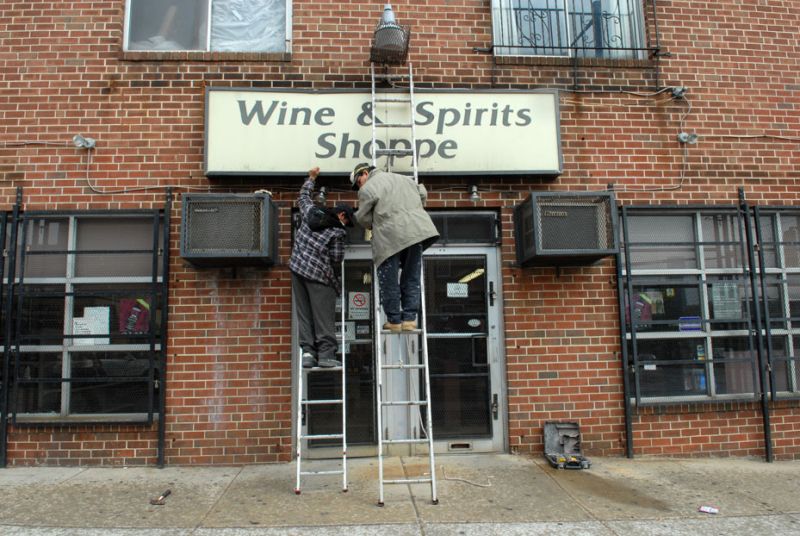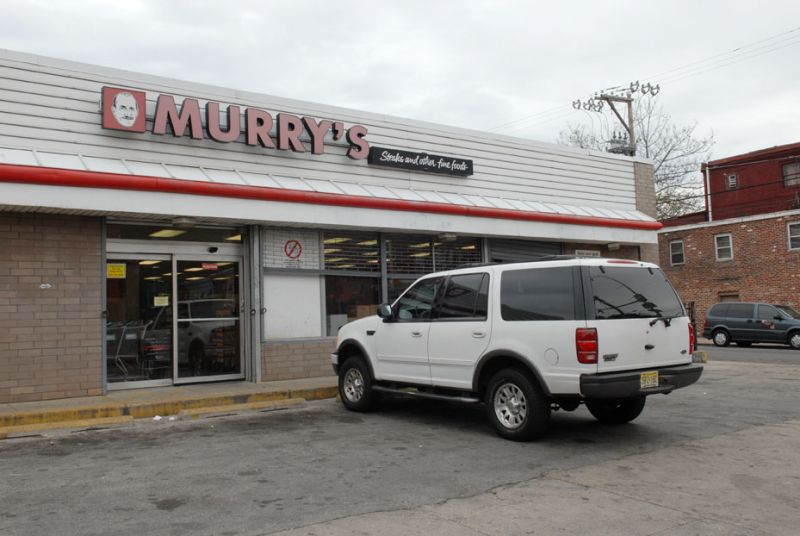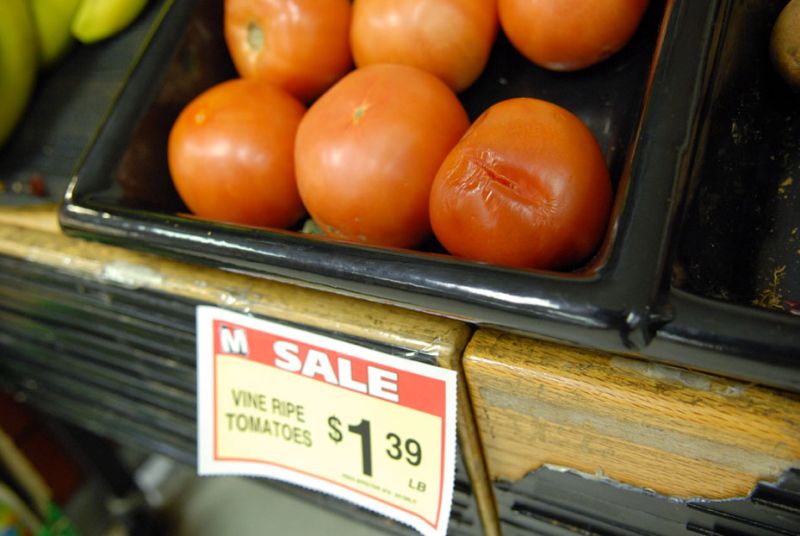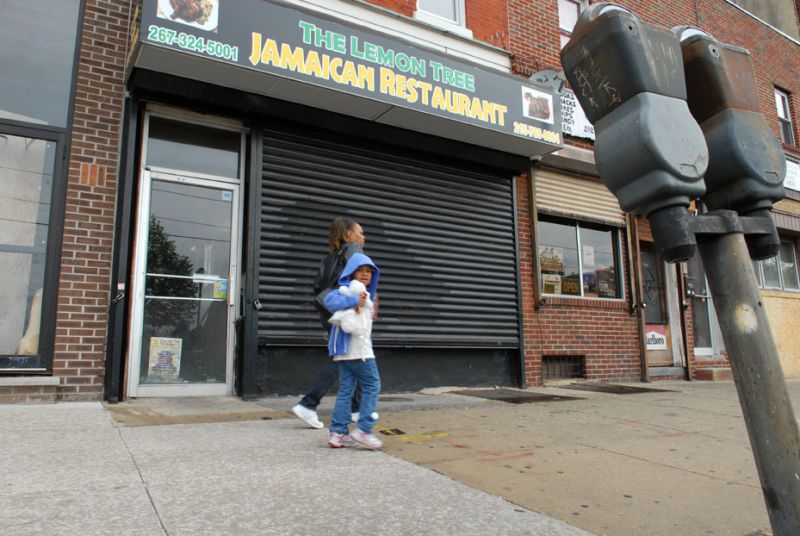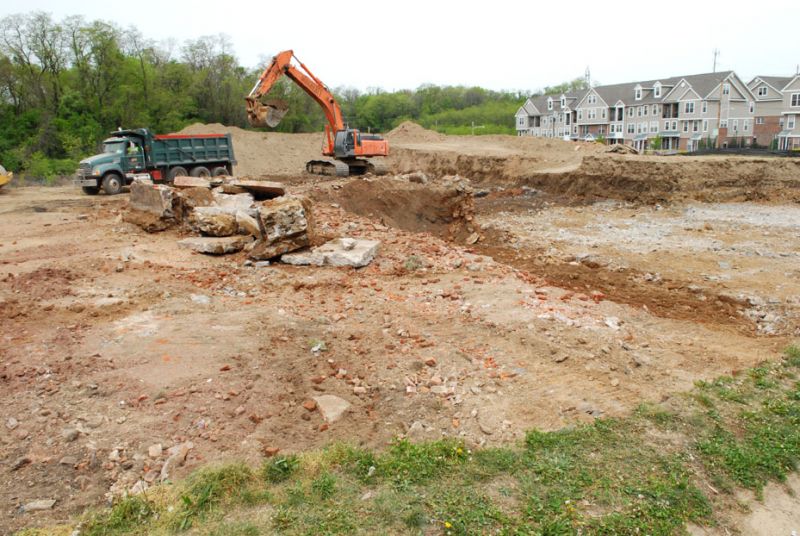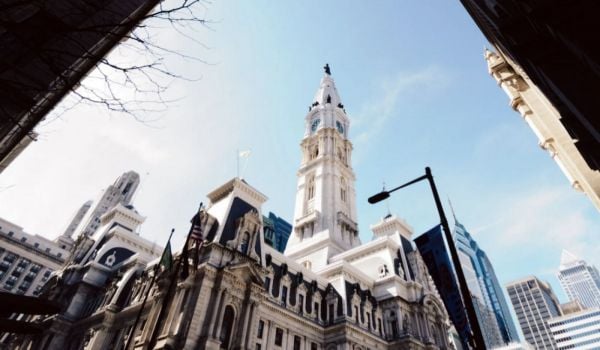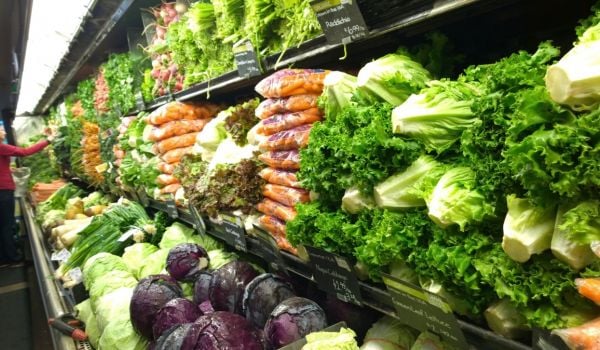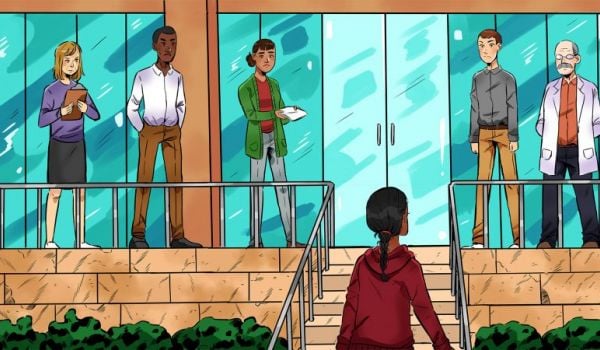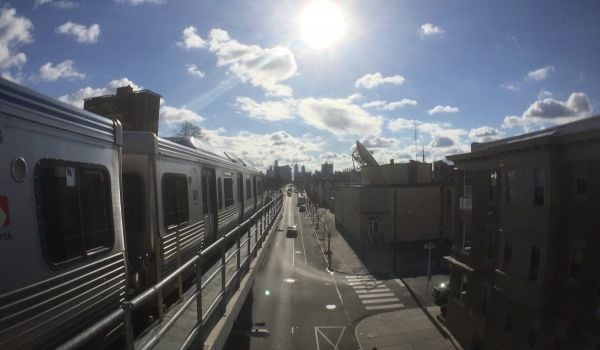Yesterday, this article on the front page of the New York Times temporarily revived the debate over “food deserts” and their impact on public health. As experts debate semantics, research methods and policy decisions, we thought it’d be appropriate to give a ground-level view of food access opportunities in an actual underserved neighborhood.
We chose Brewerytown, a low-income section of Philadelphia just north of Center City. There are 18 food and beverage businesses along West Girard Avenue, the area’s main commercial corridor. At first glance, this many vendors within a seven-block stretch seems like plenty. However, a closer look reveals an example of how food deserts can be simultaneously calorie-rich and nutrient-poor.
Of the businesses in question, two can be described as sit-down restaurants, eight as takeouts or fast-food establishments, three as corner stores, two as liquor stores, two as specialty shops and one as a grocery store. None of them, however, could be described as a ‘healthy food’ vendor.
[Full disclosure: Brewerytown is also home to Next American City’s storefront office.]
Gallery: Eating in Brewerytown
All photos by Andy Cook.
Murry’s Grocery Store
Murry’s, Brewerytown’s one grocery store for the time being, is by far the biggest vendor of fresh produce, of which the offerings are scant. Approximately 20 linear feet of display space is given to fresh produce, versus 32 feet of soda and other corn syrup-based beverages, and 50 feet of packaged frozen foods. Of the produce on display, the green peppers, tomatoes and onions were all either damaged or showed age in the form of wrinkles or mold. Half of the produce display lacked any overhead light, making it the darkest part of the store.
By far the most appealing produce on offer were about a dozen robust bags of collard greens. The bags had no markings to indicate their origin. Layout of the store is a factor as well: As opposed to a typical suburban grocery store model, where the produce section is the first thing costumers encounter upon entering, Murry’s produce is located at the back of the store, past the first display of chips and a long aisle of frozen foods like chicken nuggets and curly fries.
Corner Stores
Of the corner stores on the West Girard Avenue, two of them offered basket displays of a handful of onions and bananas. Couple that with Murry’s offerings, and this is the end of fresh produce on the street.
One corner did have a decent selection of dry goods on display: Flour, sugar, corn meal and rice were all on offer, and despite a fine layer of dust on many of these products, none had yet passed their expiration dates. Like Murry’s, these products were located behind a display of chips and donuts, above which floated a flat-screen TV showing surveillance video feeds of the store.
The other two corner stores on the avenue offered far less in terms of food. Both contained the word ‘deli’ in their names, but seemed not to do much business in that department. A typical lunchtime visit would find costumers purchasing only beer, cigarettes or lottery tickets.
Take Out and Sit-Down Restaurants
Of the eight takeout restaurants on Girard Avenue, four were Chinese or Chinese/American, none of which opened until 3pm or later. All conformed to the takeout joint in a low-income neighborhood model of greasy, msg-laden fare sold from behind a thick layer of bullet-proof glass. The other four sold Italian, Jamaican or fried food.
All three sit-down restaurants could be described as diners or luncheonettes, serving up typical American fare like burgers, grilled cheese or french fries.
Specialty Shops
The two specialty shops on Girard Avenue are a coffee shop and a Rita’s Italian Ice. The coffee shop, a branch of the local chain Mugshots, has an assortment of healthy prepared foods, however most of them are prohibitively expensive for anyone without a halfway decent income. Grilled chicken with pesto on ciabatta, for instance, costs about $8. A sizable helping of macaroni and cheese at the soul food takeout next door, in comparison, costs half that.
The Future
At the northern end of this stretch of Girard Avenue lies a construction site, the future home of a new Bottom Dollar grocery store. This project was developed by Infill Philadelphia in collaboration with the Girard Coalition, an organization of 50 neighborhood groups in the area. The project was proposed in 2009 in an effort to bring more food access to the neighborhood, and broke ground on March 30 of this year. But Bottom Dollar is a low-cost supermarket chain like Murry’s. Will it finally bring fresh produce to Brewerytown? Or wind up only offering more of the same?
Previously on NAC: Are Food Deserts an Urban Legend? Study Says…

Andrew Cook is a photographer and writer. His work moves between fine art and editorial, focusing consistently on issues of contemporary urban life. He has published two books of photographs and contributes regularly to Next American City. Cook will be enrolled at MIT in the fall as a candidate for a Masters of Community Planning. Until then, he will be making sandwiches in the woods of Vermont.

